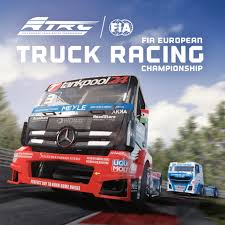Written By Kayden Sangara

European Truck Racing is a motorsport that involves heavily modified trucks racing around road racing circuits. Here are the key aspects of European Truck Racing:
- History and Development:
- European Truck Racing started gaining popularity in the early 1980s. The sport’s official European Championship was first held in 1985.
- The Federation Internationale de l’Automobile (FIA) established the European Truck Racing Championship (ETRC) to govern the sport and set its regulations.
- Trucks and Specifications:
- The racing trucks are based on commercial trucks but are heavily modified for performance and safety.
- Trucks have a minimum weight of 5,500 kilograms (about 12,125 pounds).
- Engines typically produce around 1,000 horsepower and can have a top speed limited to 160 km/h (99 mph) for safety reasons.
- Trucks are equipped with advanced safety features, including roll cages, reinforced cabins, and fire suppression systems.
- Race Format:
- A typical race weekend includes practice sessions, qualifying rounds, and multiple races.
- Races are usually short, sprint-style events lasting about 20-30 minutes each.
- Points are awarded based on finishing positions, with additional points for pole positions and fastest laps.
- Circuits and Locations:
- The championship features races at well-known circuits across Europe, such as the Nürburgring in Germany, the Hungaroring in Hungary, and the Circuit de la Sarthe in France.
- These circuits are adapted to accommodate the larger size and slower speeds of racing trucks compared to traditional racing cars.
- Teams and Drivers:
- Both factory-backed and privateer teams compete in the championship.
- Drivers often have backgrounds in various forms of motorsport, including car racing and rallying.
- Successful teams and drivers become popular figures within the truck racing community and motorsport fans.
- Fan Experience:
- European Truck Racing is known for its family-friendly atmosphere and interactive fan experiences.
- Spectators can often get close to the action in the paddock area, meet drivers, and see the trucks up close.
- Events frequently include additional entertainment, such as truck parades, exhibitions, and music performances.
- Popularity and Media Coverage:
- The sport enjoys a dedicated following, particularly in Europe, where truck culture is significant.
- Media coverage includes television broadcasts, online streaming, and extensive social media presence, helping to attract new fans.
- Environmental and Technological Advances:
- The sport is increasingly focusing on sustainability, with teams exploring alternative fuels and technologies to reduce the environmental impact of racing.
- Innovations in truck racing often influence advancements in commercial trucking technology.
European Truck Racing combines the thrill of motorsport with the unique challenge of handling large, powerful trucks on race tracks. It offers an exciting spectacle for fans and a competitive environment for drivers and teams, making it a distinct and growing segment of the motorsport world.